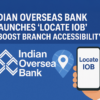Ajeet Kumar Singh, MD, Co-Founder of SAVE Solutions, shares the company’s initiatives to empower women through inclusive finance, with a focus on digitalisation and microloans:

Ravi Lalwani: What percentage of your customers are women? What percentage of your overall business comes from women customers? How have both these figures changed over the last few years?
Ajeet Kumar Singh: SAVE Group of companies is continuously dedicated to empowering women through financial inclusion initiatives. With a diverse clientele spanning various demographics, including men and women of all ages, we recognize the unique needs and aspirations of women in today’s society. Within our portfolio, SAVE Microfinance and SagGraha stand out as beacons of support for women, catering exclusively to 100% female clients.
SAVE Microfinance has 3 banking partners – SBI, DCB, and Federal Bank – while SagGraha collaborates with several banking partners such as Axis Bank, Yes Bank, Fincare Small Finance Bank, and others. Our total women’s client base is 689,612, out of which 432,667 clients are of SAVE Microfinance, and 256,945 are of SagGraha.
What changes in demand for financial services have been seen among women customers in the last 2 years?
Over the past 2 years, we’ve seen significant changes in what rural women want from financial services. This shift is driven by changes in the economy and society, especially since covid-19. The pandemic made many women rethink how they manage their money, pushing them to become more financially independent. Now, more rural women are starting businesses and aiming to be successful entrepreneurs, which helps them gain financial freedom and support their families.
One noticeable change is the increasing demand for micro-loans as women venture into building small businesses. Also, there’s been a rise in the use of digital banking services, making money management, and applying for loans or opening bank accounts easier for them.
Additionally, women are showing a keen interest in learning more about managing finances wisely. They’re actively seeking out financial literacy programs and camps to improve their financial knowledge and skills. This not only benefits them individually but also contributes to the economic growth of their communities.
What changes in demand for financial services do you expect among women customers in the next 2 years?
In the upcoming years, we anticipate women becoming more mindful about their financial futures and adopting systematic planning. As technology continues to advance, there will be a growing need for improved digital banking and financial services. Rural women are also becoming more tech-savvy, which will likely drive up the demand for digitization in this sector over the next 2 years.
Furthermore, as awareness and understanding of financial matters increase, we can expect a rise in demand for insurance-related products among women like credit life insurance, credit disability insurance, payment protection insurance, and title insurance. This reflects their desire to achieve financial independence and resilience.
Compared to men, what financial products do women prefer more and prefer less?
We’ve noticed that women are showing a strong interest in applying for joint group loans, which helps them build a sense of community while starting their enterprises. Even though our women customers are reliable and diligent in repaying loans, joint group loans offer them shared responsibility, which can help ease any stress. Micro-loans are particularly popular among our women customers, as they see them as valuable tools for their financial goals.
What parameters in your credit evaluation system are more prominent for women customers than for male customers?
Women have shown a strong track record of repaying loans on time, with almost nil defaulters in our observation. This provides valuable insight into improving our credit evaluation systems.
Have you created any financial literacy campaigns targeted at women customers? If yes, please share content samples.
Yes, we regularly host financial literacy campaigns in rural areas. These events aim to empower our women customers with essential financial and digital literacy skills, making them more confident in utilizing banking services and embracing financial inclusion. The camps feature various modules covering topics such as finance management, asset building, responsible borrowing, KYC procedures, insurance and pension schemes, and more. The camps are conducted with experts from the banking industry which helps us instill faith amongst our customers and the people of the village in general.
Read more:
Managing disruption of a different kind

Fastracking Insurance for all – Govt, Regulator & Insurers Team Up








